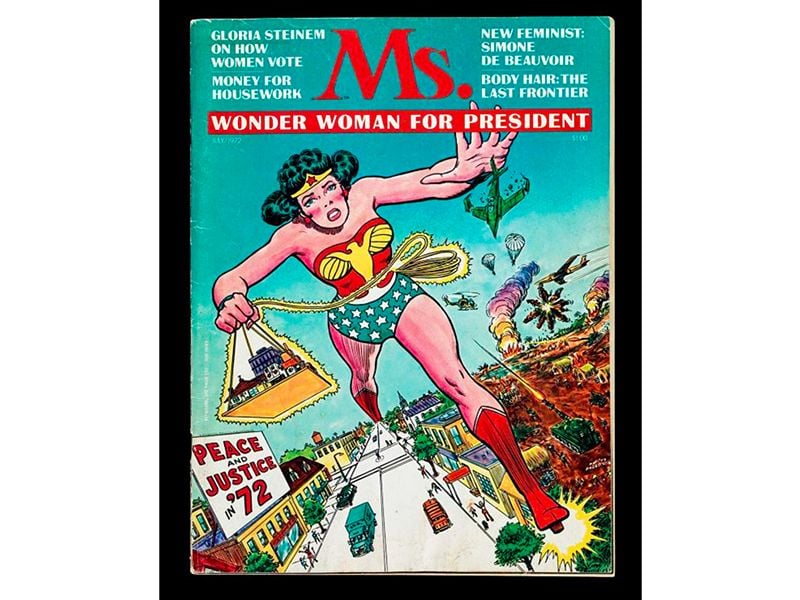Take a Virtual Tour of Feminist Icon Gloria Steinem’s Historic Manhattan Apartment
In honor of her 87th birthday, the speaker and activist is (digitally) welcoming visitors into her home
:focal(1238x1023:1239x1024)/https://tf-cmsv2-smithsonianmag-media.s3.amazonaws.com/filer/4b/03/4b03b9ae-e304-4b3e-bcf6-fdb2aca95e5e/steinem.jpeg)
Gloria Steinem co-founded Ms., the boundary-breaking, second-wave feminist magazine, in the living room of her New York City apartment in the early 1970s. As the publication gained traction and her profile as a feminist rose, the journalist’s home emerged as a central hub for activist groups.
Thanks to a partnership between the newly established Gloria’s Foundation and Google Arts & Culture, visitors can now tour Steinem’s historic living quarters virtually, reports Meredith Goldstein for the Boston Globe. Timed to coincide with the activist’s 87th birthday on March 25, the institutions have debuted an interactive tour and multimedia exhibition titled “A Home for a Movement.”
Online, viewers can wander through Steinem’s Upper East Side home and peek at her cozy, patterned interiors; the desk where she frequently works; and bookcases laden with memorabilia from the late 20th-century feminist movement. They can also watch videos about the history of the movement and listen to audio clips of Alice Walker, renowned feminist and author of The Color Purple, reading one of the poems that Steinem has hanging on her apartment wall.
I’m not celebrating my birthday at home this year, but I am celebrating my home on my birthday! I invite you all to join me (virtually) in my apartment to learn and explore some of the countless lives and stories of the women’s movement with @googlearts. https://t.co/FwietRwBeB
— Gloria Steinem (@GloriaSteinem) March 25, 2021
Steinem moved into the two-story walk-up apartment in 1966, when she was 31, per the exhibition. The writer and her roommate, artist Barbara Nessim, fashioned a loft out of salvaged wood and took turns sleeping on the balcony, as Steinem told Oprah Winfrey in a 2012 interview.
Since 1966, Steinem has bought two additional apartments in the same building, expanding her living space to three floors. She still resides in the apartment but has been staying at a friend’s home in California during the Covid-19 pandemic, reports the Globe. (Eventually, Gloria’s Foundation will assume some or total ownership of the three-story apartment, per its website.)
Steinem tells the Globe that the process of curating an exhibition out of her home was surprising, as co-curators Amy Richards and Ella Tieze ended up selecting which of her mementoes to feature.
“I’ve always felt there was something special about going into somebody’s living space,” she says. “… It was really Amy Richards, who is the mother—the parent—of this idea,” and who understood, for instance, that “photographs of people’s bookcases are fascinating.”

Viewers can glance inside the lilac-colored bathroom on one floor or peruse Steinem’s bookcases, which bear a number of artifacts from her international travels, including a selection of elephants—her favorite animal. They can also peek into her garden, which Steinem says she decided to create in order to make her friend Walker feel at home in the space, per the exhibition text.
According to the Smithsonian’s National Museum of American History, Ms. debuted as a preview in 1972 and published monthly until 1987, when it began to run quarterly. One of the magazine’s earliest issues featured a portrait of Wonder Woman on the cover and included an essay about the superhero’s role in inspiring feminism.
Born in Toledo, Ohio, in 1934, Steinem moved to New York City, where she worked to make a living in the male-dominated journalism industry, in the 1950s. As her activist career took off, she partnered with feminist Betty Friedan and Congresswomen Bella Abzug and Shirley Chisholm to found the National Women’s Political Caucus. Per the National Museum of Women’s History, Steinem also led marches in defense of women’s rights and toured the world as a public speaker.
“My apartment isn’t just a home, it’s a political center,” Steinem notes on the foundation’s website. “It’s a place where people have come to feel safe and I hope it could be preserved with that in mind. … Groups survive when they have space.”
/https://tf-cmsv2-smithsonianmag-media.s3.amazonaws.com/accounts/headshot/nora.png)
/https://tf-cmsv2-smithsonianmag-media.s3.amazonaws.com/accounts/headshot/nora.png)